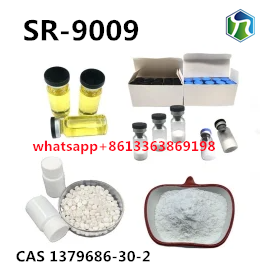
- +86-13363869198
- weimiaohb@126.com

Nov . 25, 2024 07:40 Back to list
Phenacetin Supplier Information and Application in Pharmaceuticals
Phenacetin An Overview of CAS 62-44-2 and Its Suppliers
Phenacetin, a chemical compound with the CAS number 62-44-2, is an analgesic and antipyretic agent that was once widely used in the pharmaceutical industry. Although its popularity has declined due to safety concerns, understanding its history, properties, applications, and the current landscape of suppliers can provide valuable insight for those involved in pharmaceuticals, chemistry, and related fields.
Historical Background
Phenacetin was first synthesized in the late 19th century and became a common ingredient in over-the-counter pain relief medications. It was prized for its effectiveness in treating headaches, muscle aches, and fever. The compound is a derivative of acetanilide, which can also be found in other analgesics. As a non-opioid analgesic, it offered a means of pain relief without the risk of dependency associated with narcotics.
Properties and Mechanism of Action
The molecular formula of phenacetin is C8H9NO2, and its structure features an acetamide functional group. Phenacetin is known for its relatively low solubility in water but is soluble in alcohol, which made it suitable for various formulations. The compound exerts its analgesic effect primarily through inhibition of prostaglandin synthesis, which prevents the formation of pain-inducing compounds in the body.
Despite these beneficial properties, phenacetin’s safety profile has raised significant concerns over the decades. Regular use has been associated with an increased risk of renal damage and certain cancers, which ultimately led to its discontinuation in many countries. Regulatory agencies, like the U.S. Food and Drug Administration (FDA), banned its use in favor of safer alternatives like acetaminophen (paracetamol).
Current Uses and Alternatives
While phenacetin is no longer widely used in medical formulations, it still has applications in research and testing within laboratory settings. For instance, its role as a model compound for studying drug metabolism and pharmacokinetics remains significant. Moreover, it has been employed in the synthesis of various chemical compounds and is utilized in certain industrial applications.
Despite its limitations, phenacetin has a historical significance in pain management, and its chemical derivatives continue to offer insights into the development of new analgesics. The pharmaceutical industry now focuses on safer compounds with fewer side effects.
phenacetin cas 62-44-2 supplier

Supplier Landscape
As of October 2023, several suppliers specialize in the distribution of phenacetin, catering primarily to research institutions, laboratories, and chemical manufacturers. Suppliers of phenacetin can be found across the globe, including established chemical supply companies and niche suppliers focusing on specific research needs.
When selecting a supplier for phenacetin (CAS 62-44-2), several factors warrant consideration
1. Quality and Purity Suppliers must adhere to strict quality control measures to ensure that phenacetin’s purity meets the required standards for research and industrial use. Certificates of Analysis (CoA) are crucial in verifying the quality of the chemical.
2. Regulatory Compliance Given the historical concerns surrounding phenacetin, reputable suppliers should comply with regional regulations and possess the necessary certifications. This adherence ensures that the product is safe for research purposes.
3. Pricing and Availability Research budgets can be constrained, making it important to compare prices among various suppliers. Additionally, evaluating stock availability can help in maintaining continuity in projects requiring phenacetin.
4. Customer Support Reliable suppliers should provide robust customer service to assist with inquiries regarding applications, storage, and handling of phenacetin.
5. Reputation Researching supplier reviews and testimonials can provide insights into their reliability and service quality.
Conclusion
While phenacetin (CAS 62-44-2) may no longer be a common over-the-counter analgesic, its relevance in the scientific community endures. Suppliers of this compound play a critical role in facilitating research and exploration into analgesic properties and drug synthesis. As the industry navigates the complexities of safety and efficacy, the legacy of phenacetin serves as a reminder of the importance of thorough research in the development of safe pharmaceutical products. For professionals engaging with this compound, understanding the dynamics of supply and safety is essential for responsible application in scientific exploration.
-
High-Purity cas 1451-83-8 Factory | LGD-3303 & GHRP-6 Supplier
NewsAug.23,2025
-
Wholesale CAS: 79099-07-3 Factories - China Pharma Grade
NewsAug.22,2025
-
GS-441524 for White Liquid & Pill Factories - Trusted Source
NewsAug.11,2025
-
Premium Peptides for Weight Loss & Muscle Gain | 158861 67 7
NewsAug.11,2025
-
158861 67 7: Advanced Peptides for Fat Loss & Muscle Growth
NewsAug.10,2025
-
High-Quality Pharmaceutical Intermediates for API Synthesis
NewsAug.09,2025